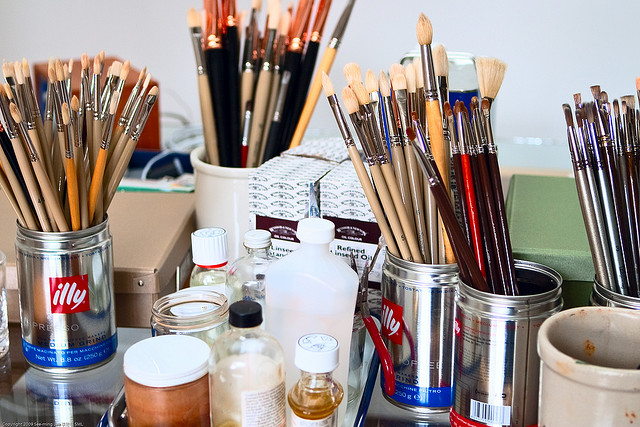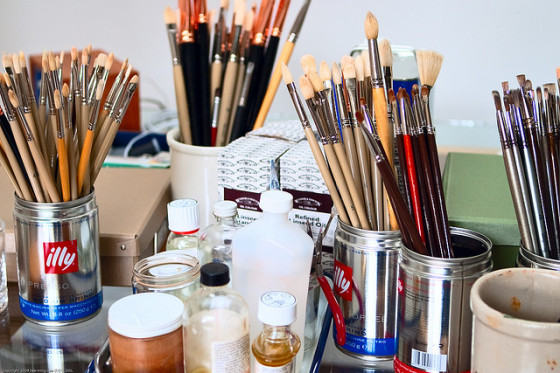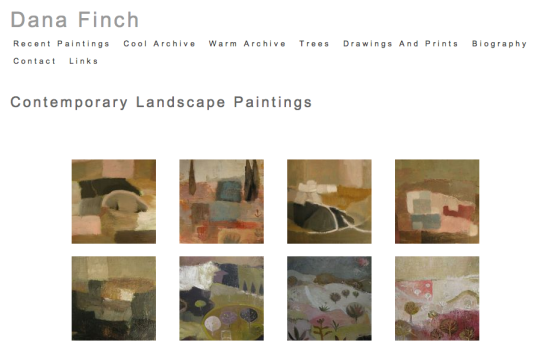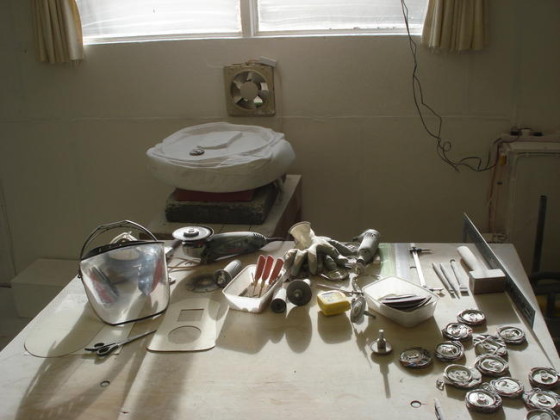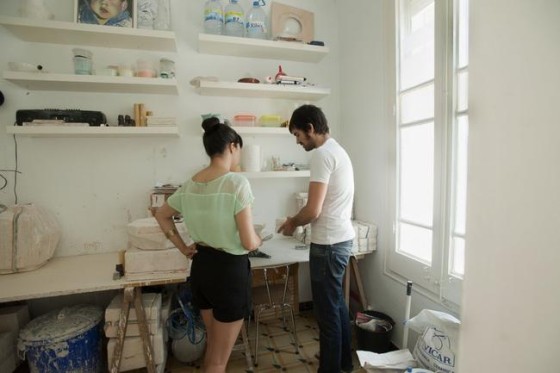(Image licensed under Creative Commons, by See-Ming Lee)
For most artists, it takes time and commitment to build their practice. Many find art after pursuing other career paths, or make work alongside full-time jobs, making it all the more tough to decide to take the plunge into a full time art career. If you’ve decided to go for it, then the exciting part begins now!
No matter what stage you’re at, whether you’ve ditched the day job, or are just hoping to make some additional income from your art, there are some essential things you’ll need to do. If you’ve decided to turn your art from an active hobby into a future career, you’ll need to be prepared! Here are 7 practical tips to help you get started:
1. Register as Self-Employed
We thought we’d kick off with with the most boring, practical and yet essential tip, one that’s best to get done early so you have less to worry about later on. You might be thinking, ‘but I haven’t sold any art yet!’ but think about how much harder it will be to do once you start getting those commissions. Pretty much all artists work on a freelance basis, so one of the first things you’ll need to do is make sure you are legally registered as self-employed in order to pay your own tax. There is plenty of information for UK based freelancers on the HMRC website, and they also run free introductions to keeping on top of your tax returns. ArtQuest also have lots of helpful resources on how to manage your finances as a freelancer, so its well worth a read.
2. Set up a website
Of course, we may be biased, but setting up a website is the best way to start sharing your work and getting it out there. The best part is, you can start one for free! ArtWeb has templates specifically built with artists in mind, as well as handy features such as Facebook syncing, in-built blogs, and online payment systems. We also have plenty of advice in the blog archive to help you get started, covering topics such as photographing your work, adding customer testimonials, and writing your ‘about me’ section.
(example of an ArtWeb artist website – Dana Finch)
3. Make a dedicated work space
Even if you can’t justify renting a studio yet, it’s a good idea to set yourself a dedicated workspace where you can focus on your craft first and foremost. If your work is purely about making, keep it laptop and admin free, so you don’t have any distractions. Make it organised and relaxed, so you’ll want to spend time there, and let the people you live with know to try and not disturb you while you work.
(Sunny Studio by Chris Milton)
If you can afford to rent a studio space, even a small one, the benefits are huge. You won’t be distracted by house work or ‘life admin’, and you’ll also be surrounded by other creative and like-minded people. Co-working or shared studio spaces are great for this, and are on the rise, as many artists struggle to afford private studios. Having this new network will be great for motivating you, and the dedicated studio space will focus your mind. Many artists forget to treat their art as they would any other job – that means making a commute, having set work hours, regular breaks, having colleagues, etc. Having a separate space away from home will do wonders for getting into this mindset… and you won’t have to wash up your paintbrushes in the kitchen sink!
(Studio by Kraznai)
4. Get involved with your local art scene
When you’re starting out, it’s vital to keep your motivation levels at their highest. One great way to do this is to have a network of other artists who you can share your progress with. As mentioned above, finding a studio with like-minded artists is a good start as you’ll likely gain an instant support network, but if you can’t afford this yet, there are lots of other options. Look for peer networking groups who hold regular meet-ups in your area – http://www.meetup.com/ is great for this, but you may be able to find people through online forums, gallery talks, or other local events. One idea could be to set up an art skills sharing club, where you invite a different artist to share a new technique each week, and then discuss each others’ work as a group. The key is to get out there and to meet other artists – they are your most valuable critics and will understand the issues you face.
5. Set clear goals
We’ve talked before about how to stay motivated when you’re working for yourself. One of the ways to do this is to set yourself goals, from long term to short term, and to schedule these on a calendar. Keep your aims realistic, but with clear intentions that help move your career forward. Of course, no one knows where they’ll be in a year, but having scheduled aims will help make sure you at least go somewhere! For example, you could say that in 6 months time you want your work to have been included in a relevant group show. So, in the next month, your short term goal is to submit to at least 6 submission opportunities.
In our previous article on motivation, we reviewed Nick Winter’s ‘Motivation Hacker’, a unique take on productivity skills and how to improve your work output. It’s a great read that we highly recommend!
6. Keep your vision strong
Have you ever been on an artist’s (or anyones) website and been utterly confused? A graphic designer who also takes on wedding photography jobs, with a couple of knitting commissions… oh and they’re also an ice sculptor! We’re not saying it’s bad to be diverse, variety is famously the spice of life. However, never fall into the trap of watering down your true vision by making work you think other people want to see. This can be really hard when you’re starting out – you don’t want to commit to a specific style just yet, in fear of missing out on that other style that you’ve seen another artist be so successful with. It’s so important to keep reminding yourself of the work you make and why, getting feedback on it, sharing it, and understanding that criticism is another word for ‘opinion’. Stay true to your artistic vision, as this will ultimately translate to the quality of the wok you produce.
To read more about how your vision should be at the core of your brand, read our recent article on branding and publicity for artists.
7. Be Persistent
Following on from the last tip, its incredibly important for all new artists to understand that not everyone will ‘get’ your work. The key is to never take criticism personally, and even more importantly, never stop making art! Set that time aside every day to indulge yourself purely in the making, without worrying about what others might think or say. When people look at art, they look for the artist behind it, so being genuine and not giving up on that will always pay off in the end!
For more tips on how to get out there on an artist, see our previous blog series’ – Exhibiting your work, Art and Money, and Making the most of your website.
Good luck!

